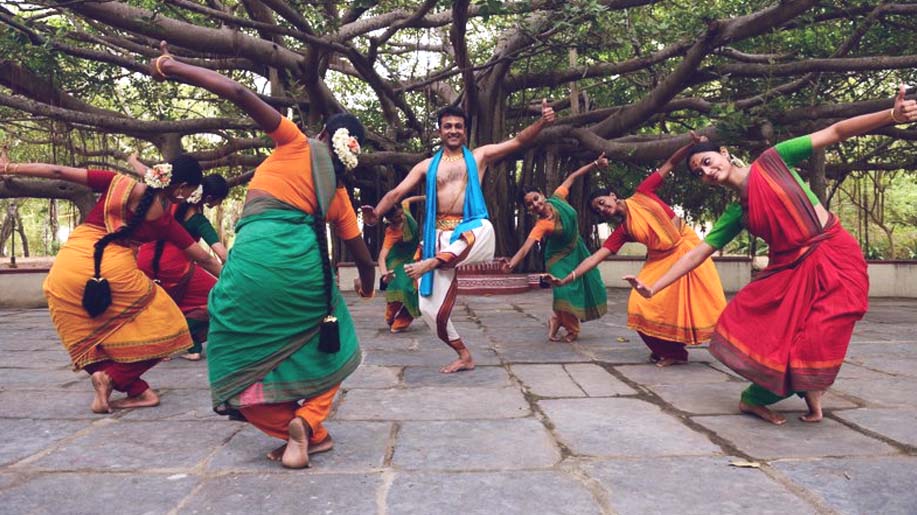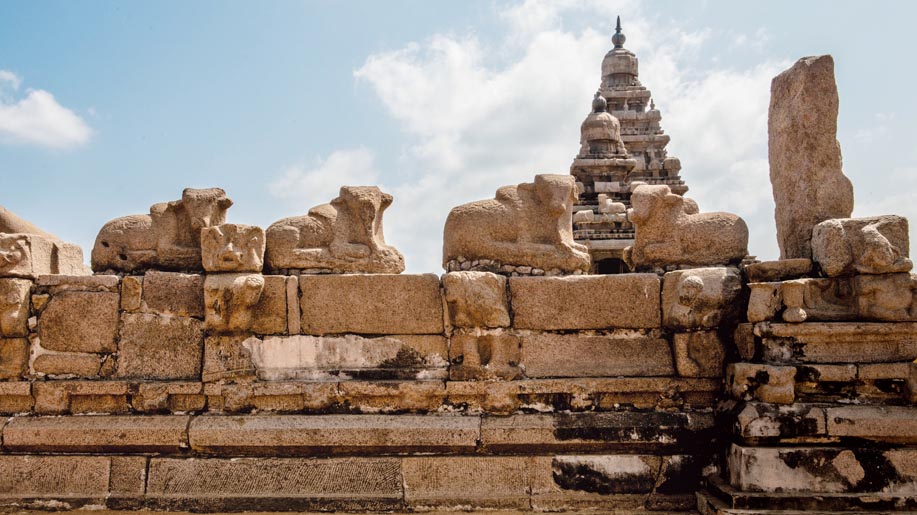
Locals say, if you visit Chennai and leave without trying the idlis at Murugan Idli Shop, your trip is incomplete. I couldn’t agree more. The taste, texture and flavour of the idlis (savoury rice cakes – a staple of South India) here are entirely different in comparison to what one may have tried elsewhere. They’re softer and fluffier, and served piping hot, fresh out of the steamer and on the banana leaf that is your dining plate.
Though the idlis are served with chutneys, one could eat them plain as well. On ingesting the last bite, I see Brahma, my guide in Chennai, bringing me a glass of a pinkish drink topped with ice cream. “This is jigarthanda, a speciality of Murugan,” he tells me. Jigarthanda actually originated from Madurai, an ancient city in Tamil Nadu, about 450km from Chennai. The drink, quintessential to the state intends to cool you down. In fact, the name literally translates to “cool heart”.
Brace yourself when ordering it because it is quite heavy – prepared with milk, almonds, rice and ice cream. Thankfully Murugan’s idlis aren’t heavy on the stomach, and so I had enough room to polish this dessert-drink.
Much to my dismay, Brahma tells me with a grin, “Our meal is not complete without filter coffee, madam.” Any Indian who has frequented South Indian restaurants knows that filter coffee marks the end of your meal, irrespective of what you have consumed earlier. It is prepared by beating coffee and sugar with hot water to make a somewhat thickish paste. Hot milk is poured into it before serving it in a stout steel glass placed in a shallow steel bowl. This is so you can toss the coffee between the glass and the bowl to cool it down, before slurping it.
Thus, began my wonderful weekend exploring Chennai’s culture, a city of warm-hearted people who take pride in being the custodians of heritage, art, tradition and music.

DANCE
A reflection of Tamil Nadu’s art and culture is Kalakshetra Foundation (kalakshetra.in) that has been around since 1936. It was founded by classical dancer Rukmini Devi Arundale. In 1993 it was recognised as an Institute of National Importance by the Government of India. The visionary had set-up this institute to keep alive the languishing art form of Bharatnatyam that originated in Tamil Nadu. The building itself has a rustic charm to it. It resembles an ancient Tamilian home with a terracotta roof, patterned floor tiles and modest wooden and cane furniture within. There is a beautiful courtyard with a large tree under which students dressed in cotton South Indian saris or pavada (blouse, ankle-length skirt and a long scarf) practise Bharatnatyam to the beats of Indian percussion instruments. When it gets too hot – April-June – the class moves indoors. Chennai is known for pleasant weather for most part of the year. At least twice a month, modestly priced tickets have appreciators of classical dance and music fill the partially open air auditorium.

CRAFT
Another open air centre for arts is DakshinChitra. It overlooks the Bay of Bengal at Muttukadu, on the East Coast Road leading to the ancient temple town of Mahabalipuram. This living museum opened to the public on December 14, 1996. On its land, there are 18 heritage houses, purchased from other locations, dismantled and reassembled here to showcase the lifestyle and architecture of, for example, a Syrian-Christian, Calicut, Chikmagalur or Ilkal Weavers’ household. Walking around them felt a lot like a stroll through a scene out of a history book – it was green and serene, away from the chaos of city life. Except for cars in the distance, there is little evidence of modern life glaring at you. Artisans were happy to feed my curiosity while they weaved a basket, beaded a necklace or knitted a stole. All these items are available at the on-site bazaar to encourage the artisans’ growth with the help of NGOs who educate them on how to expand their businesses. The overall atmosphere here is friendly, mainly because interaction seems to be important to its members. Visitors too can participate in activities such as competitions, volunteering and workshops to acquaint themselves with almost forgotten skills. (Open Wednesday-Monday 10am-6pm; ₹100 for Indians, ₹250 for foreigners; dakshinachitra.net.)
ART
About halfway between the above two centres is the charming Cholamandal Artists’ Village. It actually has a heartwarming story to its origin. The principal of Government School of Arts and Crafts (India’s oldest art institution in Chennai), K.C.S. Paniker brought together and encouraged artists specialising in various mediums to form Artists’ Handicrafts Association. The group of 30 artists worked on wood, ceramic and leather amongst other materials to create varied art forms including jewellery and sculptures. Their sales helped raise enough money for the group to contribute ₹4,000 each to purchase ten acres on April 13, 1966.
Today, each of the 30 plots is a studio-cum-home for the artists, some of whom are award-winners – P.S. Nandan and M. Senathipathi. Over the years, a few artists have passed away, their homes occupied by the next in kin or purchased by non-artists. The village itself is equipped with art galleries showcasing contemporary works of modern artists and beautiful gardens displaying alluring pieces created from granite, wood, copper and bronze. I bought a few to take home – or at least the more affordable ones. Performances, poetry reading sessions and dance recitals take place often at the open air theatre here. Interesting pieces of terracotta and batik, to name a few are available at the village shop. I for one enjoyed touring homes of the artists – it’s interesting to watch them transform raw materials and empty canvases into masterpieces. For long stays, a house can be rented here too. Open daily 10am-7:30pm; +91 44 2449 0092.

OUTSKIRTS
Mahabalipuram is about a two-hour drive from Chennai and is a small coastal town known for century-old temples. The seafront Shore Temple reflects the glory of the Pallava dynasty from the 7th and 8th centuries through intricate carvings with spectacular detailing on its facade and in sculptures within. Krishna’s Butter Ball is another attraction here, a massive boulder appearing precariously balanced on a small hill slope. This UNESCO World Heritage Site is a collection of spectacular ancient monuments and temples, definitely worth a visit.
Kanchipuram was the capital of the Pallava dynasty. This is where kanjeevaram (type of silk) saris come from. Some of the shops have a workshop at the back; most of them usually allow you to watch their workers spin a good sari. Kanchipuram too has an impressive collection of ancient temples from Pallava, Chola and Vijayanagar dynasties.
Getting around
Cabs and auto rickshaws are easily available in the city and run by the metre.
Architectural attractions
- Higginbothams bookstore, built in 1844, Palladian architecture.
- Madras High Court, built in 1892, Indo-Saracenic architecture.
- Thousand Lights Mosque, built in 1810, medieval architecture.
- National Art Gallery, built in 1906, Indo-Saracenic architecture.
- St Andrew’s Church, built in 1821, Georgian architecture.












